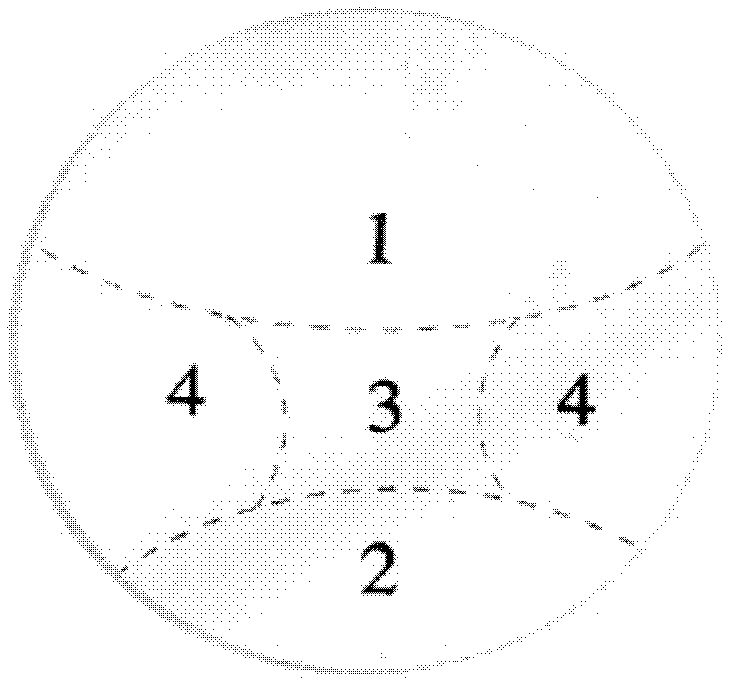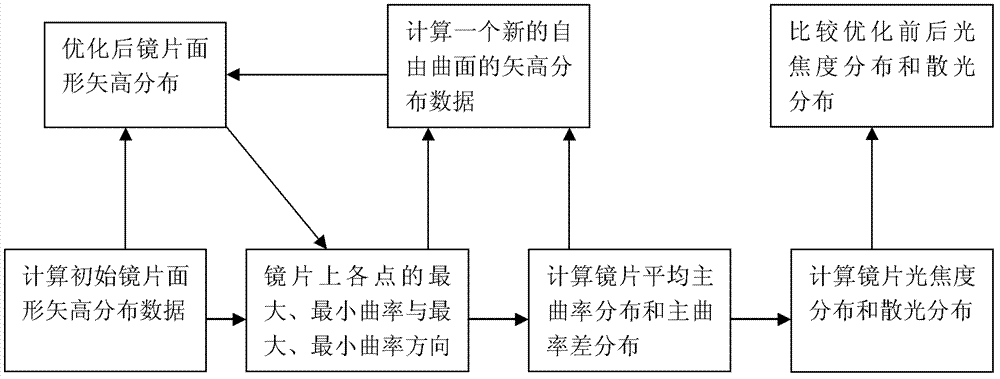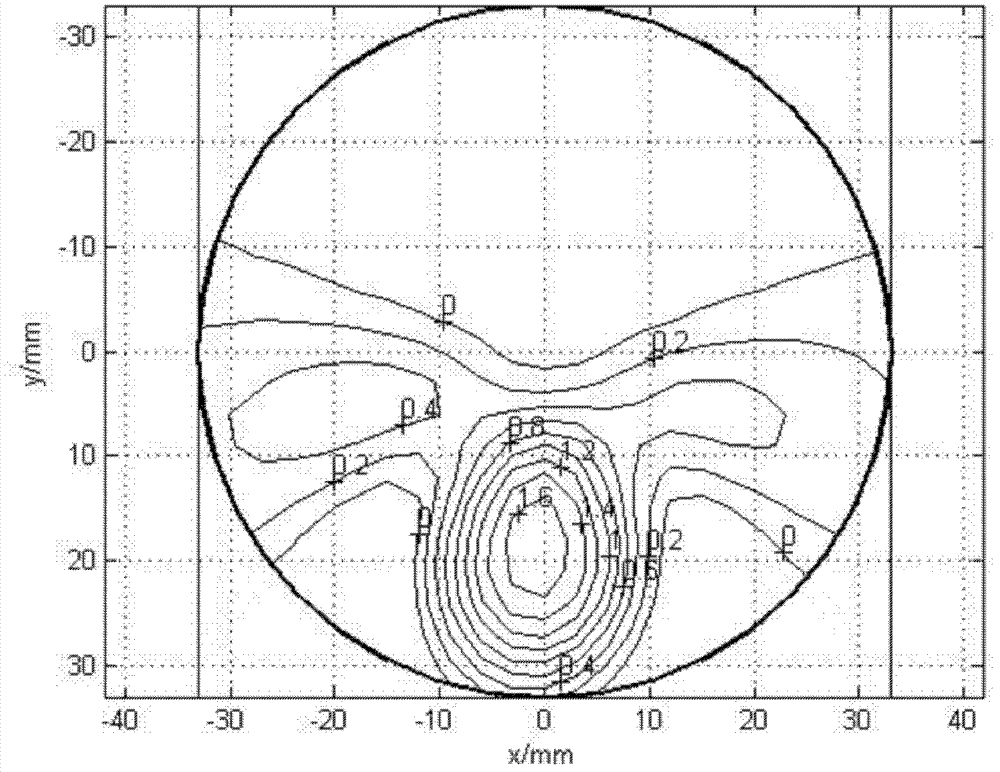Optimization method for reducing astigmatism of progressive additional lens
A progressive multi-focus, optimization method technology, applied in the direction of installation, optics, instruments, etc., can solve the problems of not improving the effective viewing area, not being in a very ideal state of astigmatism distribution, and not having lens optimization, etc., to achieve effective and reliable The viewing area is enlarged, the optimization effect is uniform, and the effect of reducing astigmatism
- Summary
- Abstract
- Description
- Claims
- Application Information
AI Technical Summary
Problems solved by technology
Method used
Image
Examples
Embodiment 1
[0036] In this embodiment, the design requirement parameters of the lens to be processed are: the lens power of the far vision point is 0 diopter, the amount of light added between the distance vision and the near vision point is 1.8 diopters, and the lens channel length h=14 mm.
[0037] The lens parameters of the lens to be processed are: diameter 66mm, refractive index 1.523.
[0038] See attached figure 1 , It is a schematic diagram of the partition of a progressive multifocal lens. The lens surface is divided into the distance zone 1, the intermediate transition zone 2, the near vision zone 3 and the astigmatic zone 4.
[0039] See attached figure 2 , It is a flow chart of steps for optimizing the astigmatism of a progressive addition lens provided by this embodiment. The specific steps are:
[0040] 1. The initial lens shape and vector height distribution
[0041] In this embodiment, first, according to the method disclosed in US Patent 4861153, the initial vector height distribu...
Embodiment 2
[0066] The implementation steps are the same as the first embodiment, where θ is 3° and M is 35.
[0067] See attached Figure 8 , Which is an iso-power contour map of the progressive addition lens processed by the astigmatism optimization method provided in the second embodiment of the present invention. Compared image 3 with Figure 8 It can be seen that after adopting the technical solution provided by the second embodiment of the present invention, the iso-contour line with the optical power of 0 diopter becomes flatter, indicating that the clear range of the far vision area is significantly expanded, and the effective visual area of the wearer is improved.
[0068] See attached Picture 9 , Which is the contour map of the astigmatism of the progressive addition lens processed by the astigmatism optimization method provided in the second embodiment of the present invention. Compared Figure 5 with Picture 9 It can be seen that after adopting the technical solution provided ...
Embodiment 3
[0070] The implementation steps are the same as in the first embodiment, where θ is 18° and M is 20.
[0071] See attached Picture 10 , Which is an iso-power contour line diagram of the progressive addition lens processed by the astigmatism optimization method provided in the third embodiment of the present invention. Compared image 3 with Picture 10 It can be seen that after adopting the technical solution provided by the third embodiment of the present invention, the iso-contour line with the optical power of 0 diopter becomes flatter, indicating that the clear range of the far vision area is significantly expanded, and the effective visual area of the wearer is improved.
[0072] See attached Picture 11 , Which is the contour map of the astigmatism of the progressive addition lens processed by the astigmatism optimization method provided in the third embodiment of the present invention. Compared Figure 5 with Picture 11 It can be seen that after adopting the technical ...
PUM
 Login to View More
Login to View More Abstract
Description
Claims
Application Information
 Login to View More
Login to View More - R&D
- Intellectual Property
- Life Sciences
- Materials
- Tech Scout
- Unparalleled Data Quality
- Higher Quality Content
- 60% Fewer Hallucinations
Browse by: Latest US Patents, China's latest patents, Technical Efficacy Thesaurus, Application Domain, Technology Topic, Popular Technical Reports.
© 2025 PatSnap. All rights reserved.Legal|Privacy policy|Modern Slavery Act Transparency Statement|Sitemap|About US| Contact US: help@patsnap.com



